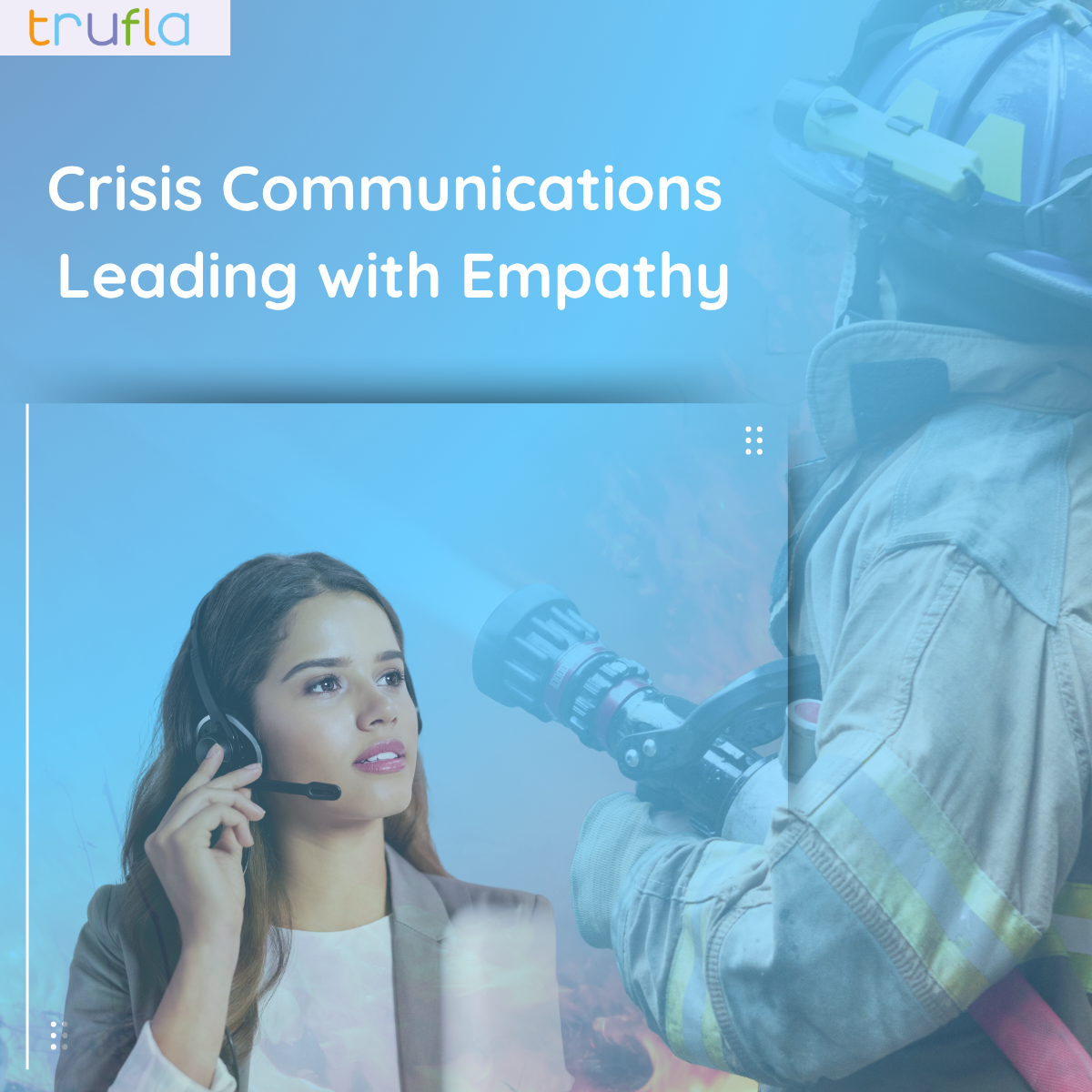
Building Trust When It Matters Most: A Crisis Communications Blueprint for Insurance Brokers
By Tanya Coburn, VP of Marketing & Communications, Trufla
I’ve seen what happens when communication fails in a crisis. I was there during the 2013 Calgary floods—one of the worst natural disasters in Canadian history. Our industry wasn’t ready, and it showed. Clients were angry. Confused. Abandoned. And it wasn’t the lack of coverage that did the most damage. It was the lack of communication.
That’s why I created this Crisis Communications Blueprint. Below, I’m breaking down the full strategy—including the 16 Tenants of Crisis Communications—to help brokers respond with speed, empathy, and clarity when their clients need them the most.
Why Build a Crisis Communications Plan?
Because in a crisis, how you communicate determines whether you lose trust or earn it for life.
The 16 Tenants of Crisis Communications
These are the foundational building blocks for your strategy, and speed is the thread that connects them all.
1. Lead With Empathy
Empathy isn’t a soft skill—it’s your emotional infrastructure. It builds trust before the policy conversation even begins. Neuroscience backs this: cortisol spikes in stress, but empathy releases oxytocin, which fosters connection.
How to Apply It:
- Tone check every message: “Does this feel like it came from someone who cares?”
- Use clear, calm, human words
- Follow the sequence: Acknowledge → Validate → Guide
2. Be Proactive, Not Reactive
Silence fuels fear and misinformation. Proactive communication fills the gap before anxiety spirals.
Tactics:
- Send a holding statement within 30 minutes
- Share partial info (what you know, what you’re doing, when you’ll update)
- Brief internal teams first
3. Clarity Over Complexity
Stress impairs logic. Complex language feels evasive, while simplicity builds transparency.
Rule of Thumb: Grade 6 reading level. Say “hotel and meals” instead of “ALE coverage.”
4. Single Source of Truth
Create one centralized hub for accurate updates. Internally and externally.
Why: False info travels 6x faster than truth (MIT study). One missed bulletin can tank your reputation in under 48 hours.
5. Multi-Channel Strategy
Don’t rely on just one method. People miss emails. Repeat your message across:
- SMS
- Social media
- Landing pages
- In-app messages
- Video
Why it matters: According to the Ebbinghaus Forgetting Curve, people forget up to 70% of new info within 24 hours.
6. Monitor & Listen Actively
Track social media, news, and community sentiment in real time. Early warning signs often show up in comments and local chatter.
7. Support Mental Wellness
Your team is going through this too. Crisis comms start with resilient internal culture. Equip them with talking points, breaks, mental health access.
8. Train Before You Need It
Quarterly drills. Tabletop exercises. Crisis simulations. If your team doesn’t practice, they won’t perform.
9. Communicate Internally First
Your people can’t support clients if they’re confused themselves. Internal alignment builds external confidence.
10. Align With Brand Values
If your brand stands for “always on your side,” your messaging better reflect that in a crisis. Walk the talk.
11. Clarity Over Complexity (Again!)
Say it simply. Repeat it often. Give people the cognitive relief they need to trust you.
12. Designate Key Spokespeople
Who is your voice to the public? Who handles media, staff, and social channels? Define it before the storm hits.
13. Adapt as the Crisis Evolves
Situations change fast. Messaging should too. Build in flexibility.
14. Prepare Templates in Advance
Have these pre-written and ready to go:
- Holding statement
- ALE evacuation email
- Social post
- Claims landing page
15. Stick to the Facts
No speculation. No drama. Facts reduce misinformation, liability, and panic.
16. Evaluate & Evolve Post-Crisis
After the dust settles, debrief. What worked? What broke? Document and refine.
Building Your Crisis Plan
Speed is the byproduct of preparation. Here’s what your crisis plan must include:
| Element | Includes | Accelerates Response |
|---|---|---|
| Risk & Stakeholder Map | Top threats, who needs what info | No last-minute scrambling |
| Governance & Roles | Clear owners for comms, approvals | No bottlenecks |
| Single Source of Truth | Internal and public-facing hubs | Eliminates conflicting updates |
| Templates | Emails, SMS, social posts | Drop-in-ready comms |
| Channel Matrix | Email, social, phone, app | Parallel delivery across channels |
| Partner Alignment | Carriers, restoration, media | Unified response |
| Drills & Training | Quarterly or semi-annual | Builds muscle memory |
Can You Respond in 60 Minutes or Less?
Here’s the ideal timeline:
- 0–5 min: Crisis lead validates event
- 5–10 min: Internal alert sent
- 10–30 min: Holding statement released
- 30–45 min: Landing page published
- 45–60 min: Client-specific alerts sent
- By 75 min: Social posts live
Most BMS platforms can’t even pull a list by postal code in that time. That’s why we built truMobile to give brokers the power of hyper-segmentation and mass communication in under a minute.
Final Thought
You don’t need to be perfect. But you do need to show up. When you lead with empathy, act fast, and speak clearly, you become more than a policy provider—you become a trusted guide.
Download our Free Crisis Communications Blueprint: http://trufla-8384067.hs-sites.com/crisis-comms-blueprint